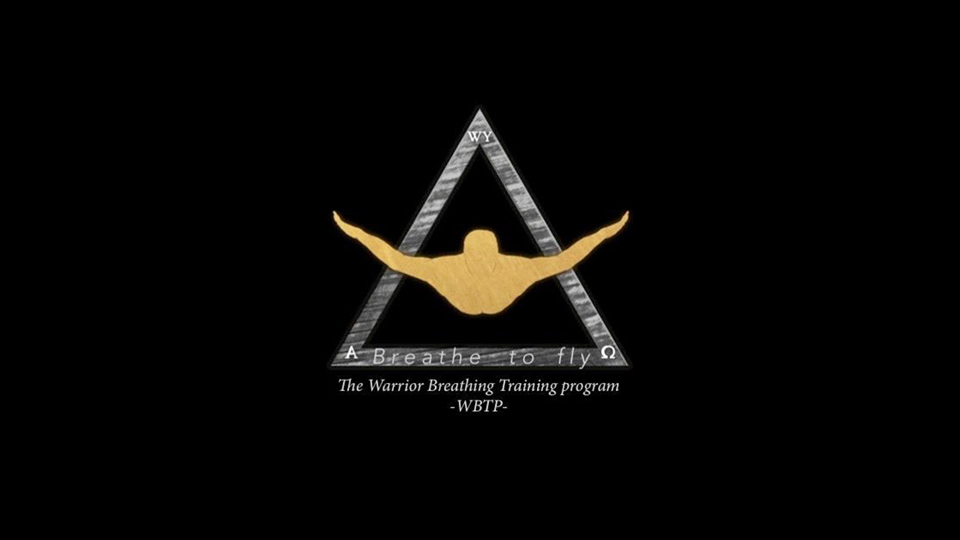-The Warrior Breathing Training Program (WBTP)
Breathe to fly
“Hook the breath, relax”. The most pronounced words by a freediver instructor. Hook breath is a maneuver performed by freedivers at the surface after every dive. It consists of inhaling promptly and encapsulating the inhaled air. This technique helps recover the oxygen consumed during the immersion. Relaxation is a fundamental condition to perform freediving sport. These two words have become a mandate for a lifestyle that centers the attention in breathing and relaxation.
Back in 2012, I started a freediving journey in the Colombian Caribbean Sea, learning the first concepts of the art of breath-holding. I developed a strong connection with this discipline from the very first moment, understanding the importance to adopt a permanent culture of good respiratory practices to achieve improved respiration. This is how I became aware of the importance of improving the quality of my breath.
This respiration matter seems more like a “yogi” thing, not relevant to a military individual like myself, but I think training breath control could be included in different military instruction programs. In fact, one of the marksmanship principles is breathing control. However, there are no subject matter experts in this field of breathing. A different approach is taken by one of the finest Special Operations forces in the world, the Navy SEALs, adopting breathing practices to master operating in a VUCA (volatility, uncertainty, complexity, and ambiguity) environment, using situational awareness skills developed through training such as box breathing.
In the pursuit of this interest in getting better control of my breathing, I found several specialized books that helped me gain more knowledge about the health benefits for people who can achieve improved respiration. Furthermore, I consulted experts on the subject of breathing. In 2017, in Bonaire, a Dutch island in the Caribbean, I asked Carlos Coste, @deepseafreediving, to assist me in my preparation to become a freediver instructor. Carlos is one of the best free diver trainers in the world, and the first human to go below the 100 meters mark, diving only with his fins.
I spent one month studying the theory of freediving, learning several breathing exercises, and doing a different type of underwater breath-holding maneuvers. I had the privilege to share classes with Theo Knevel, @theoknevel, a former military member of the Royal Dutch Marines Special Boat Service. Carlos gave us high-quality preparation to pass the demanding requirements, both physical and academic, to earn our PADI (Professional Association of Divers Instructors) free diver instructor certification.
Besides the proud feeling of being a freediver instructor, I ingrained the freediving culture. I reaffirmed my belief about the benefits of adopting a lifestyle which devotes sublime attention to improved respiration. To train and live as a freediver is among other things, to perfect relaxation, to master concentration, and to prepare the body to perform at highly demanding levels in a different dimension.
Now, up to this point, I had traveled an important path for more than 5 years in my quest to improve my respiratory capacity. Now I wanted to follow a specific and detailed breathing training plan. Where can I find a program to improve my breathing? The google machine knows everything. In this case, it didn’t!
Online there are an infinite number of websites that propose deep breathing exercises or alignment of chakras through the energy of the universe. Others, most, focus on perfect demonstrations of yoga poses, which I believe are more interested in showing in their social media how cool they look doing one pose or the other.
I was not able to follow a breathing training plan, in the same way, that I have trained triathlon, freediving, and other sports. I also did not find the answers I was looking for, for the following questions
- What is the medical science behind good breathing?
- Which are the benefits of deep breathing?
- How is good oxygenation achieved through respiration?
The Wolfpack Yoga (WY), the first publication of breathe like a warrior series concentrates an exceptional effort on a personal physical training program, to prepare the average individual to assume superior control of the mind and body in a systematic, gradual, and progressive way; and maintain this control until the last breath of his life. The second one presents The Warrior Breathing Training Plan (WBTP), with specific apnea techniques with full and empty lungs (during inhalation and exhalation) and some detailed exercises that clearly define the following aspects:
- Description of the exercise
- Training objective
- Execution
- Standards
- Desired end state / effects of the exercise
The complete program is now available on amazon kindle 👇🏼
With this in mind is that the WBTP is designed and implemented. An example of a 5-week program is proposed in Breathe Like a Warrior II.This is a specific breathing training plan with the breath-hold type of workouts; oriented to achieve improved respiration. I am convinced this program has a positive effect on five essential aspects of ordinary life; leadership, mental focus, decision making, health, and physical fitness.
